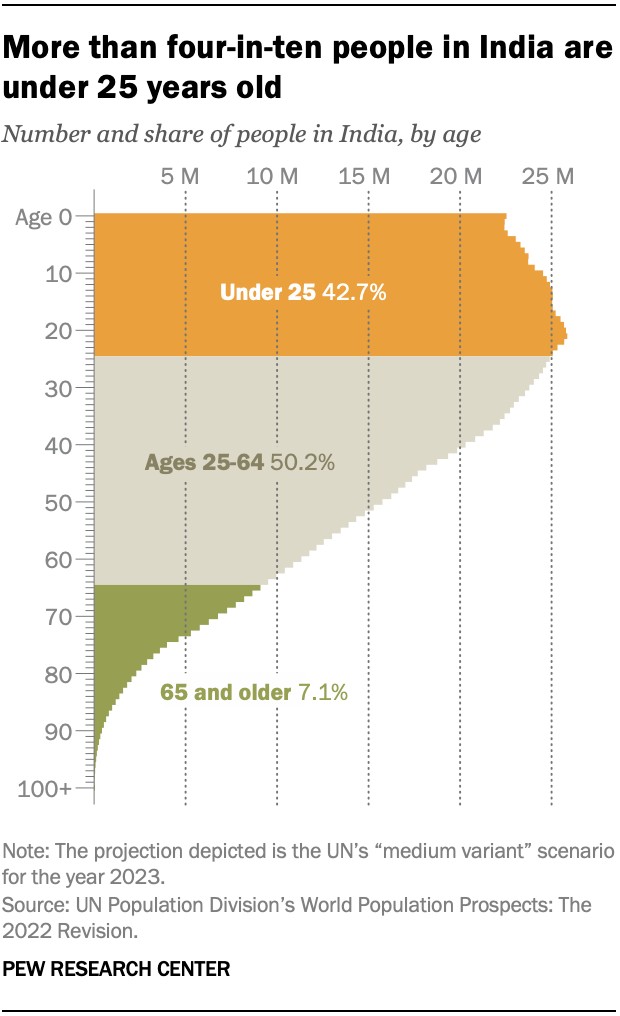India officially surpassed China as the world’s most populous nation in April 2023. This historic shift marks a significant change in global demographics. While both nations boast populations exceeding 1.4 billion, India’s population is expanding, while China’s is contracting. This article delves into the key population differences between India and China, exploring various factors contributing to this demographic divergence.
India’s Population Explosion: A Billion Strong and Growing
Since 1950, when the United Nations began recording population data, India’s population has surged by over a billion people. This remarkable growth has propelled India past China, making it the most populous country on Earth. India’s population is projected to continue growing, potentially reaching 1.7 billion by 2064 according to the UN’s medium projection scenario.
Youthful India vs. Aging China: A Tale of Two Demographics
A striking difference between the two nations lies in their age structures. Over 40% of India’s population is under 25, representing a significant portion of the global youth population. This young population contrasts sharply with China’s aging demographic, where a shrinking workforce and a growing elderly population pose significant societal challenges. India’s median age is 28, significantly younger than China’s median age of 39.
Fertility Rates: A Key Driver of Population Growth
India’s total fertility rate, while declining, remains higher than China’s. An average Indian woman is expected to have 2.0 children in her lifetime, compared to 1.2 in China. This difference in fertility rates contributes significantly to India’s continued population growth. While factors like education and urbanization have contributed to declining fertility rates in both countries, India’s rate remains higher, particularly in rural areas.
Regional Variations Within India: A Diverse Demographic Landscape
India’s population growth is not uniform across the country. Fertility rates and population growth vary considerably between states, influenced by factors such as economic opportunities and access to healthcare. For example, states like Bihar and Meghalaya have higher fertility rates, while states like Sikkim and Goa have much lower rates.
Migration Patterns: India’s Outward Flow
India experiences net negative migration, meaning more people leave the country than enter it. This trend, projected to continue, contrasts with many other nations experiencing population growth through immigration.
Conclusion: India’s Demographic Dividend
India’s burgeoning population presents both opportunities and challenges. Its large, young workforce could fuel economic growth, but only if the country can create sufficient jobs and invest in education and infrastructure. Managing this demographic transition will be crucial for India’s future. Meanwhile, China grapples with the implications of its aging population and shrinking workforce. The contrasting demographic trajectories of these two Asian giants will undoubtedly shape the global landscape for decades to come.
